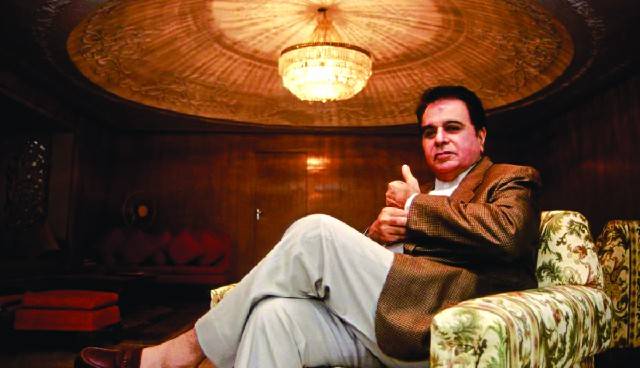
Dilip Kumar has been fantasy’s gift to reality. An incredibly handsome individual, he had the daunting task of playing ordinary characters. As a superstar, he has been comparable only to Rudolf Valentino, his histrionic talent being comparable only to Paul Muni. His accomplishments as an actor gave him the stature that he could intervene in the conversation of two prime ministers and bring about the de-escalation of conflict between the country of his adoption and the country of his origin — India and Pakistan. Hailing from the most volatile region of South Asia, he has excelled in an art which is still not fully appreciated in his native Peshawar. Indeed Dilip Kumar has related how he had to face the opposition of his father and other elders over his choice of a film career.
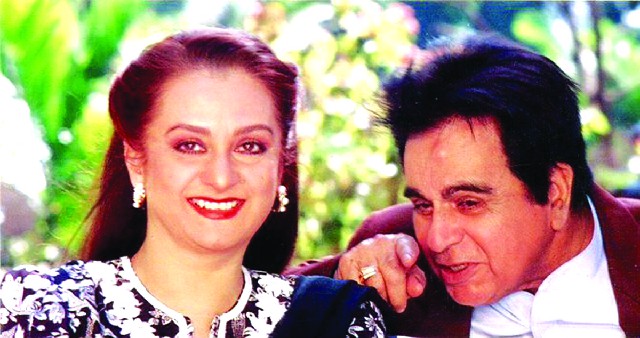
As the most iconic of matinee idols, having been the ideal for generations and in this capacity becoming an inescapable part of the Subcontinent’s cultural consciousness, and even though he was woven into the tapestry, he took time out to survey the scene from the pinnacle. At such moments one can only fall back on his own memory, in his own words. Yet, almost as soon as his autobiography was published (2014), the verdict was in. Two Dawn contributors contended that it was not Dilip Kumar’s but Saira Bano’s book. Even if true, this is nothing to cavil at. Saira Bano, a star in her own right, is the young lady who throughout their married life has looked after our hero with such loving care.
There shall always be people who favour his pre-Interval life over his post-Interval life. Perhaps they thought it fitting for Dilip Kumar to provide, in his real life, a climax similar to his roles in Devdas (1955) and Musafir (1957), and that “they lived happily ever after” is a sort of let- down. But then his book The Substance and the Shadow is precisely about the relation between reel life and real life.
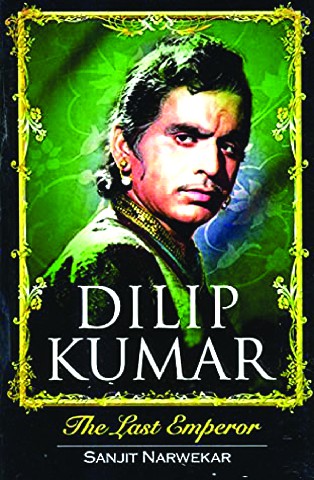
Dilip Kumar’s book has not only been reviewed, it has been previewed. The question posed by Bunny Reuben at the beginning of his biography has now come to the fore: “Which is more authentic, a biography or an autobiography?” (Dilip Kumar: Star Legend of Indian Cinema, 2004, p.7)
Let us then, first check the authenticity of the biography. Bunny Reuben writes:”Jwar Bhata (1944) flopped, while Nasir Khan’s Mazdoor (1945) proved to be a hit.” (BR p.53). In the first place, Jwar Bhata was not a flop. In Calcutta, at any rate, it had a longish run, as I found out by poring over the files of the daily Asr -i- Jadeed. Reuben is only initially correct when he says that the top-billing was given to Agha. In the beginning, the film’s ad in Asr -i- Jadeed did feature Agha – Mridula – Dilip Kumar, but during the first run of the film, the order was reversed to Dilip Kumar – Mridula – Agha. Thus Dilip Kumar made his mark with his debut.
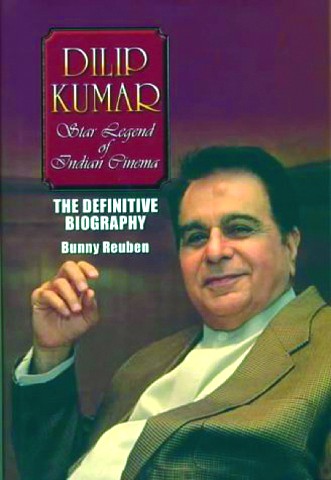
There is yet another book, by Sanjit Narwekar, titled Dilip Kumar: The Last Emperor (New Delhi, Rupa & Co., 2004), which has a less pretentious but more insightful account of the life and career of Dilip Kumar, and it is deserving of more readership. But since it is not intrusive, we need not dwell overmuch on it
I went to school with Jalal Agha and I remember that our school bus dropped him at Haji Ali, near Worli. It was during lunch break that Jalal used to regale his classfellows with the dialogues between “Papa” and Dilip Kumar. This must have been around 1949, or Andaz – and please excuse me if my memory is playing tricks. As for Reuben’s mentioning that Nasir Khan’s Mazdoor proved to be a hit, this raises a question which can fairly be answered in a biography, not an autobiography: The circumstances of both brothers being same, who was Nasir Khan’s Devika Rani? If Nasir Khan could intercede with Nitin Bose on his brother’s behalf (BR p.79), it is fair to conclude that Dilip Kumar had provided an opening to his younger brother. Nasir Khan, it should be mentioned, had immense talent, as his role opposite Meena Kumari in Daira (1953) is sufficient to show. As to why he had needed re-launching we shall discuss later on.
The obvious implication behind Reuben’s question is that an autobiography is considered more authentic because it displays first-hand knowledge, while a biography is considered more authentic because it lacks bias. Both conditions are presumptuous. Reuben’s Dilip Kumar is based on autobiographical pieces: a number of articles written by Dilip Kumar. He cites in particular an article on Dilip Kumar written by Motilal (BR. pp. 172-174). What he does not mention is that it was a Filmfare centre-spread feature, and the opposite page carried an article on Motilal by Dilip Kumar. I remember a much later article in which he mentioned the advances in cinematography, such as stereophonic sound. This appeared, I seem to recall, in Star & Style. Bunny Reubens refers to an article “Unforgettable Moments” which he co-authored with Dilip Kumar, but what is maddening to a historian is that he does not document the articles he cites. Had he referred to the particular journals and issues, retrieval would have been easier. If the archives have been maintained in Mumbai, this might still be possible. The last article of Dilip Kumar that I read was his obituary of Johnny Walker. Between Motilal and Johnny Walker, there must have been other articles that I could not access. The ones that I have read convince me that compiled together, these articles would constitute the most insightful history of Bollywood. They could comprise a companion volume to Substance and Shadow, enabling Dilip Kumar to play a double role as an author as well.
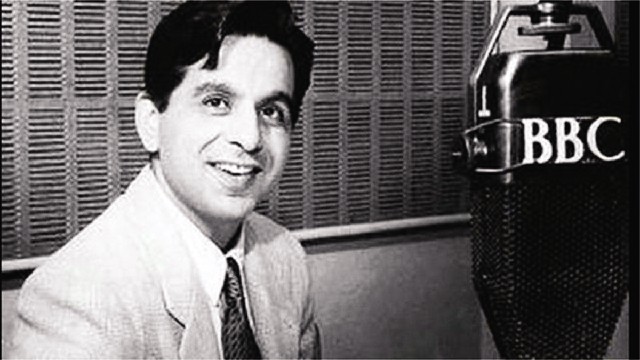
What does Substance and Shadow tell us that other books cannot? What does it involve, playing a character, different from oneself so convincingly that the real person disappears?
“It is not as if I did not realize that whatever I was doing in films was unreal and diametrically opposite to my real life and my real self. But the situation was such that people came and talked about some of the tragic scenes that I had done convincingly, or about a film that had attracted them to view it repeatedly because a death scene in it was beautifully performed, and that made me think about it even if I didn’t want to.” (DK p.155)
This is the consequence of dedication, since Dilip Kumar rarely signed more than one film at a time, therefore his change of characters did not go through the turnstile. And since the performances proved memorable, there was repeated feedback.
(to be continued)
Note:
Dilip Kumar’s autobiography The Substance and the Shadow was published in 2014. Bunny Reuben’s Dilip Kumar was published in 2004. The same year saw the publication of Sanjit Narwekar’s Dilip Kumar: The Last Emperor
The author is the Editor of the Journal of the Pakistan Historical Society. He has written among other books A Concise History of Pakistan Oxford, 2009, and Pakistan Studies Oxford, 2007

As the most iconic of matinee idols, having been the ideal for generations and in this capacity becoming an inescapable part of the Subcontinent’s cultural consciousness, and even though he was woven into the tapestry, he took time out to survey the scene from the pinnacle. At such moments one can only fall back on his own memory, in his own words. Yet, almost as soon as his autobiography was published (2014), the verdict was in. Two Dawn contributors contended that it was not Dilip Kumar’s but Saira Bano’s book. Even if true, this is nothing to cavil at. Saira Bano, a star in her own right, is the young lady who throughout their married life has looked after our hero with such loving care.
There shall always be people who favour his pre-Interval life over his post-Interval life. Perhaps they thought it fitting for Dilip Kumar to provide, in his real life, a climax similar to his roles in Devdas (1955) and Musafir (1957), and that “they lived happily ever after” is a sort of let- down. But then his book The Substance and the Shadow is precisely about the relation between reel life and real life.

Dilip Kumar’s book has not only been reviewed, it has been previewed. The question posed by Bunny Reuben at the beginning of his biography has now come to the fore: “Which is more authentic, a biography or an autobiography?”
Dilip Kumar’s book has not only been reviewed, it has been previewed. The question posed by Bunny Reuben at the beginning of his biography has now come to the fore: “Which is more authentic, a biography or an autobiography?” (Dilip Kumar: Star Legend of Indian Cinema, 2004, p.7)
Let us then, first check the authenticity of the biography. Bunny Reuben writes:”Jwar Bhata (1944) flopped, while Nasir Khan’s Mazdoor (1945) proved to be a hit.” (BR p.53). In the first place, Jwar Bhata was not a flop. In Calcutta, at any rate, it had a longish run, as I found out by poring over the files of the daily Asr -i- Jadeed. Reuben is only initially correct when he says that the top-billing was given to Agha. In the beginning, the film’s ad in Asr -i- Jadeed did feature Agha – Mridula – Dilip Kumar, but during the first run of the film, the order was reversed to Dilip Kumar – Mridula – Agha. Thus Dilip Kumar made his mark with his debut.

There is yet another book, by Sanjit Narwekar, titled Dilip Kumar: The Last Emperor (New Delhi, Rupa & Co., 2004), which has a less pretentious but more insightful account of the life and career of Dilip Kumar, and it is deserving of more readership. But since it is not intrusive, we need not dwell overmuch on it
I went to school with Jalal Agha and I remember that our school bus dropped him at Haji Ali, near Worli. It was during lunch break that Jalal used to regale his classfellows with the dialogues between “Papa” and Dilip Kumar. This must have been around 1949, or Andaz – and please excuse me if my memory is playing tricks. As for Reuben’s mentioning that Nasir Khan’s Mazdoor proved to be a hit, this raises a question which can fairly be answered in a biography, not an autobiography: The circumstances of both brothers being same, who was Nasir Khan’s Devika Rani? If Nasir Khan could intercede with Nitin Bose on his brother’s behalf (BR p.79), it is fair to conclude that Dilip Kumar had provided an opening to his younger brother. Nasir Khan, it should be mentioned, had immense talent, as his role opposite Meena Kumari in Daira (1953) is sufficient to show. As to why he had needed re-launching we shall discuss later on.
I went to school with Jalal Agha and I remember that our school bus dropped him at Haji Ali, near Worli. It was during lunch break that Jalal used to regale his classfellows with the dialogues between “Papa” and Dilip Kumar
The obvious implication behind Reuben’s question is that an autobiography is considered more authentic because it displays first-hand knowledge, while a biography is considered more authentic because it lacks bias. Both conditions are presumptuous. Reuben’s Dilip Kumar is based on autobiographical pieces: a number of articles written by Dilip Kumar. He cites in particular an article on Dilip Kumar written by Motilal (BR. pp. 172-174). What he does not mention is that it was a Filmfare centre-spread feature, and the opposite page carried an article on Motilal by Dilip Kumar. I remember a much later article in which he mentioned the advances in cinematography, such as stereophonic sound. This appeared, I seem to recall, in Star & Style. Bunny Reubens refers to an article “Unforgettable Moments” which he co-authored with Dilip Kumar, but what is maddening to a historian is that he does not document the articles he cites. Had he referred to the particular journals and issues, retrieval would have been easier. If the archives have been maintained in Mumbai, this might still be possible. The last article of Dilip Kumar that I read was his obituary of Johnny Walker. Between Motilal and Johnny Walker, there must have been other articles that I could not access. The ones that I have read convince me that compiled together, these articles would constitute the most insightful history of Bollywood. They could comprise a companion volume to Substance and Shadow, enabling Dilip Kumar to play a double role as an author as well.

What does Substance and Shadow tell us that other books cannot? What does it involve, playing a character, different from oneself so convincingly that the real person disappears?
“It is not as if I did not realize that whatever I was doing in films was unreal and diametrically opposite to my real life and my real self. But the situation was such that people came and talked about some of the tragic scenes that I had done convincingly, or about a film that had attracted them to view it repeatedly because a death scene in it was beautifully performed, and that made me think about it even if I didn’t want to.” (DK p.155)
This is the consequence of dedication, since Dilip Kumar rarely signed more than one film at a time, therefore his change of characters did not go through the turnstile. And since the performances proved memorable, there was repeated feedback.
(to be continued)
Note:
Dilip Kumar’s autobiography The Substance and the Shadow was published in 2014. Bunny Reuben’s Dilip Kumar was published in 2004. The same year saw the publication of Sanjit Narwekar’s Dilip Kumar: The Last Emperor
The author is the Editor of the Journal of the Pakistan Historical Society. He has written among other books A Concise History of Pakistan Oxford, 2009, and Pakistan Studies Oxford, 2007

